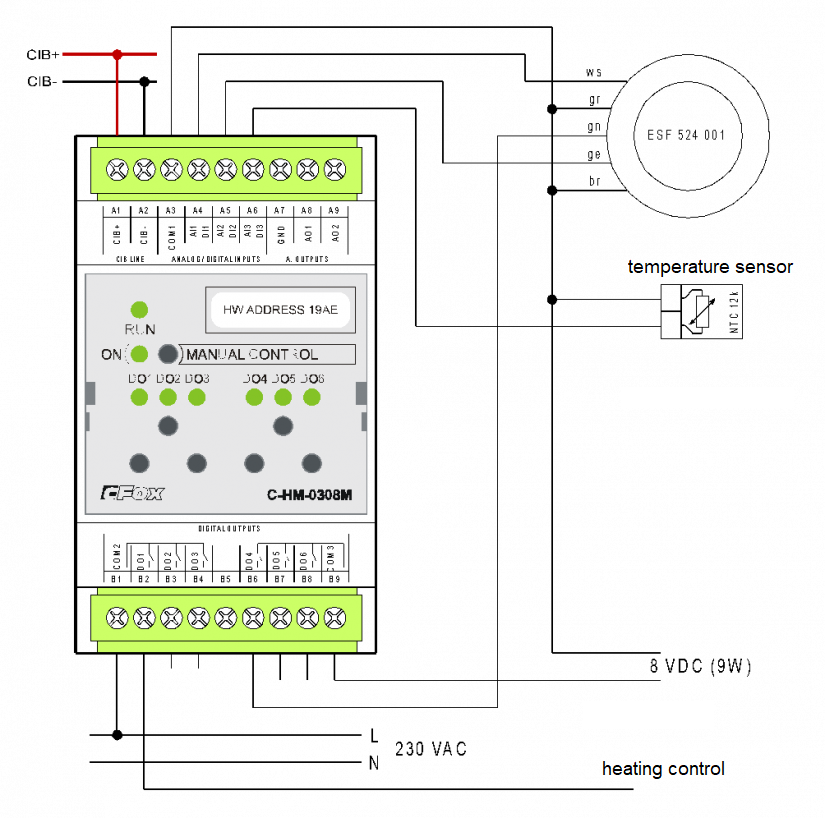Defrosting of outdoor spaces is done using electric heating cables (Raychem, etc.) controlled according to the outdoor temperature and precipitation using temperature and humidity sensors mounted in the monitored area. The system is activated if the temperature sensor measures a temperature drop below the set value, while the ice and snow sensor detects the presence of snow or ice. The area is heated during the snowfall or freezing rain to a temperature above the freezing point, and black ice does not form. The system shuts down if ice or snow is no longer present or the temperature rises above the set value. A parallel connection of two humidity sensors is also possible, which increases the reliability of the system. Using two sensors prevents formation of the so-called tunnel effect, when a layer of snow on the sensor melts and an ice crust is formed, which prevents contact of the humidity with the sensor).
The wiring example uses a combined heated temperature and humidity sensor ESF 524 001 (or ESF 524 011, Eberle) and a separate temperature sensor (suitable for smaller areas); in larger areas, an unheated combined temperature and humidity sensor TFF 524 002 (or TFF 524 012), which should be connected in the same way. The heating cables can be controlled by any relay output of the control system (according to the switching power). The connection to the C-HM-0308M module is shown in the following figure.

Fig. .1 A wiring example – defrosting of smaller areas
Notes:
-
The unheated sensor (TFF 524 002) is connected analogically, only the heating output is omitted.
-
Defrosting of areas and gutters can be combined, and both systems can be supplied from the same source.
-
Sensors made by other manufacturers should be connected in a similar way (according to the company documentation).
-
The relay heating output must be adjusted (strengthened) according to the actual switching power.
 English
English